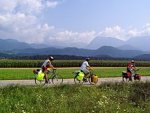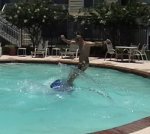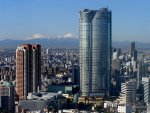26" 1-3/8 (650A) bicycle tires for my mama-chari
I don't have time to go into details right now, so I'll write about it later, but I would like some information on 26" bicycle tires. I'd like the fastest one possible.
I'm just starting to look into it, so I don't know much about it, but it looks like the 1-3/8 or 650A standard will fit for my new old bike. I had my driving license suspended for 30 days.
They should be fast, strong, and able to withstand higher pressure than 3.0 kpa or kph or something I don't have time for searching it right now.
At the moment I have a few candidates, first the Panaracer Cordelavi, then the Schwalbe Marathon, and the Michelin World Tour. These tires will not be mounted on a road bike, but on an ordinary bicycle. This is what is called a "mama-chari" (mom bike) in our country. Charinko.
If you have any information about this, please let me know. (^v^)/
If you are racing in Charinko you should be riding a Big Wheel, not a 26" bicycle.
I don't intend to race, but I needed a bike to get to the beach since my license had been suspended. I don't like trains and it costs a lot of money to get there.
Yes, it seems that there are quite a few options for a 27" bike, aren't there? But not for a 26" bike, Why is that?
The first blog I read when I started looking into getting better tires for this bike (Bridgestone Mark Rosa 26", seems to be a quite old model) said that it was impossible to get fast tires for a 26" mama-chari, but it was possible for a 27" mama-chari.
After that, I couldn't give up and searched for more information. As usual, I pieced together some useful information from the garbage, and found that the three types of tires I mentioned above could be used for a 26-inch normal bike.
I've also seen some guys say that better tires that can be used for a 26-inch 1-3/8 are rare.
These three models are for so-called randonneur, I learned that the priority of randonnerur is durability, but not speed.
Perhaps Westerners are familiar with the term "randonneur," but this is the first time I've heard it. It seems to have originated in France... I've read in Europe, where cobblestones are often used as pavement, tires that are too thin tend to get stuck between French stones.
In a review of Schwalbe Marathon on Amazon, there was a guy who said that he forced his Mark Rosa 26" to wear these tires and that became faster than a bad cross bike. It seems that they'll be faster than tires typically used on mom bikes, even if they're for randonneurs. Or is there no such much difference about speed?
As far as I've been able to find out, he is the only person on the Internet who claims to have made faster a 26" Mark Rosa with that kind of tire.
I'm tempted to believe him even if he's lying because I want to make my bike faster, but lately I've become skeptical.
Also, I was talking to a boy at the bike shop today, and he said that if you put high pressure tires on a normal bike, since the spokes stick out a little bit inside the wheel, which is different from the pure sport construction, so if you use high pressure, the tube may hit the tips of the spokes. Do you know if this is true? I would not want to experience such a sad ending.
I have realized that repairing my scooter requires a lot of capital investment and skill, and I'm not really suited to that kind of things like flashing the BIOS, so I gave up and forced my kouhai (younger friend) to do it. However, repairing bicycles don't seem to require so many tools and equipment, so I think I'll be able to enjoy learning how to repair and maintain this bike.
I've overtaken some real road racers (at least they looked so) with my mountain bike a few times, though it was downhill. The mountain bike seems to be stolen, btw. I think I'll make it my goal for now to overtake a $10,000 road racer with my 26" mom bike. Oh, so it might be race, for sure.
> Perhaps Westerners are familiar with the term "randonneur," but this is the first time I've heard it.
We mostly call these "touring bikes" in America. America is a very big country, so a lot of people like to ride these touring bikes for hundreds or even thousands of miles.

By the way, since you are the only obvious American I know on this forum, andyprough san, I would like to ask you, which is the ideal spelling of between "Mangar-Senpai" and "Manger-Senpai" when a normal native English speaker sees these spellings and pronounces these? The ideal spelling means, that if I were to force myself to write it in English phonetic symbols, it would be [mʌŋɑːsenpaɪ]. The accent is on the first syllable [mʌ], the rest is pronounced mostly flat. Or should I spell it something else for it to be pronounced correctly?
In case you're wondering why this is important, if you were to write it in Japanese, it is "マンガー先輩", and no one reads it as "マンゲー先輩". However, if you write "Manger-Senpai" in English, there is a possibility that it will be read as "マンゲー先輩", so ideally, I had thought it would be better to write "Mangar-Senpai" so that even Japanese speakers would be able to pronounce it correctly. However, I feel that "er" is more suitable in general, like Sing > Singer. Herein lies the difficulty of choice.... If I write Manger-Senpai, I might be called マンゲー先輩, or worse, マンゲーさん, etc. "Mange" is a Japanese word that refers to the women's under hair. How about Mangue-Senpai? How it pronounces?
Mangar is good - like a "hangar" for airplanes.
Mangue-Senpai would be pronounced "Maaang-Sen-peye". In American English, the "-ue" ending would be dropped.
> Mangar is good - like a "hangar" for airplanes.
OK, thanks. I'm relieved.
But even if that's the best we can do phonetically, will people guess the meaning correctly from that spelling?
I went to Tokyo to pick up my bike. I cycled straight back home, but it was quite a distance.
There are several routes on the main road, and this time I chose one that I had taken at least once before. I noticed that it was the road with the most ups and downs. When I went through it in the past, I didn't think it was that hard...
Anyway, my butt was really sore.
I kept going up and down, and when I thought I had finally finished the climb, I saw the next uphill in the distance. When I finally finished it, I saw the next uphill in the distance, and when I finished that one, I saw the next one in the distance.
After a few times up and down, the performance of the bike and my very declined physical strength made me exhausted, so finally I got off the bike and started to rest. It was a bit humiliating.
After a short rest, I was able to cycle again for a while. I thought I understood a little bit about how soccer players get tired in the first half, but after a short rest at half time, they are able to move again for a while.
But after I kept repeating this, I couldn't move my legs anymore. I couldn't pedal at all, so I finally got off the bike and started pushing it. It was even more humiliating.
I used to be overwhelmingly strong, and even when the people sat down exhausted, I was still able to run and run and run...
I was passed by several cyclists. It was humiliating, but I told myself that I was coming back from Tokyo after strolled there on my mom bike, his bike is a road bike, and I was sick and losing strength...
Then a girl passed me. She was riding an electric bicycle. It was the first time I understood the power of an electric bicycle. It was very fast. I think electric bicycles are by far the most powerful among all bicycles when it comes to uphills. It doesn't matter if it's a racing bike or anything else, it's absolutely unbeatable. She was the fastest on the hill. The queen.
I was thinking that she wouldn't respond to my advances. Because I was pushing my mom bike by my hands.
I felt like I needed to regain some strength first before I could modify my bike.
It seems that replacing the front crank first, rather than the tire, is probably the cheapest and easiest way to increase speed. The front crank, or rather the sprocket, has 42 teeth now, my understanding is that if I change it to 53 teeth or something, the gear ratio will change and it will become heavier, but I need some tools including a special tool, and the tools are more expensive than the crank.
I used to burn when I saw an uphill climb. Apparently, there are limits to what we can do.
I did the same thing with my dad's old bike about 7 years ago. I tried to do a 17-mile ride on it, but I had not ridden much for many years, so I was not able to do the whole ride. I pushed my dad's old bike home in humiliation. The next day I made myself do it again, even though I was hurting badly. I made it further, but still had to push it home. The next day I did it again and I rode the bike the whole way home, and I never had to push it again.
I don't know if I can say it was the same experience of mine. The ups and downs of those hills that I went up and down were really tough. And I'm guessing that your father's bike is a road bike, even if it is old. Mine is a mom bike. I know everyone wants to say that "mine was tougher", but Japan is a mountainous country.
On the other hand, I guess Texas is almost flat because of its proximity to the ocean. Well, the sense of humiliation for it might be same, though.
I was thinking that there was no ocean in Texas, but I recently found out that the beach is rather close to Houston. It has the same bay structure as Shonan, so the waves seem to be basically small. However, when a hurricane occurs, the waves will be huge. It is also the same as Shonan. I thought the color of the sand and the sea were strangely similar as well. Since it is the Caribbean Sea, I assume that the sea temperature is quite high, how is it really? Do you need a 5mm full-suit in the winter? I was looking up the sea temperature in San Pablo Bay for about 10 minutes, but couldn't find anything.
No, there are a lot of big hills in that part of Texas.
I've always wondered why Roppongi Hills is named "Hills" when it's not even on a hill.
You can see here one of the sad and tragic consequences of a defeated nation's people.
I've heard that inside Fuji TV is full of relatives of politicians, so I guess the artists who make "D.D." and the like like to live there. They were called "the Hills" or something like that. I'm sure they're all hillbillies. A genuine Tokyo-born urbanite would be too embarrassed to live in such a place. All your letters and licenses have "Roppongi Hills" written on the address. It is nothing but a silly gag. To you foreigners, and especially to Americans, it wouldn't be a bad gag. But for Japanese people, it's not a gag anymore, it's just... it really makes us sick. We get tired of this kind of things anyway. Please...
There was a complex in Singapore called 'Ginza Plaza', but they changed the name to 'West Coast Plaza'. I think that's a bit wiser.



